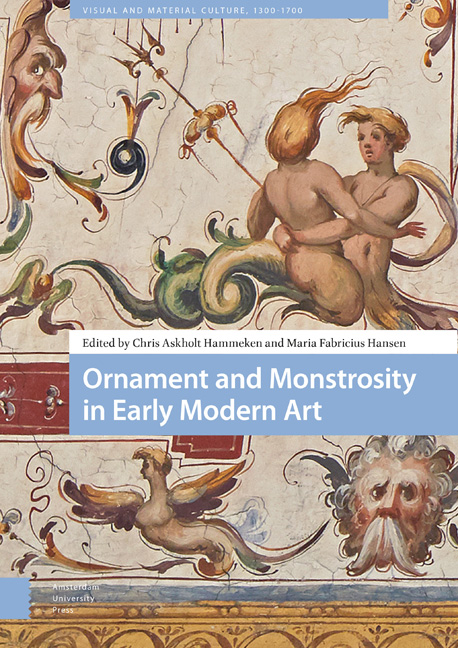7 - Sea-Change: The Whale in the Florentine Loggia
Published online by Cambridge University Press: 21 November 2020
Summary
Abstract
In 1550 the carcass of a whale found on the shore close to Livorno was displayed under the vaults of the Loggia dei Lanzi in Florence, evoking a sense of ambiguity between art and life. Exposed as a hunting trophy and natural wonder, the sea creature can also be seen as a monstrous ornament, overwhelming in sheer scale and bizarre lifelikeness. An analysis of this curious showpiece will contribute to deepening our understanding of how the monstrous and ornamental qualities of sixteenth-century visual culture correlated with conceptions of image-making. My chapter suggests a relation between anthropomorphic ideas in architecture, the interest in skeletons, dissection, and cadavers on the one hand, and, on the other, sixteenth-century grotesques and fascination with transformation.
Keywords: animation, lifelikeness, artificiality, wonder, cosmology, anatomy
In 1550 the carcass of a whale was found on the shore close to Livorno and displayed under the vaults of the Loggia dei Lanzi in Florence. Cosimo de’ Medici had the colossal bones transported to the city in order to have them examined and assembled anew, resulting in bizarre lifelikeness. The whale carcass appeared overwhelming to contemporary onlookers and even seemed ‘as if [it] was alive’. Occupying approximately half of the length of the loggia, the huge sea creature was framed and arranged as a monstrous ornament. The visual phenomenon of the whale carcass can be related to ideas of the living image that in sixteenth-century writing on art had almost become a cliché through a descriptive vocabulary with a quite exhaustive topos: by far, the highest praise possible was to say that figures breathe or pulsate with life. Sixteenth-century art theory was completely entangled in a web of rhetorical thinking, and the ancient ekphrastic issue of lifelikeness and illusionism flourished in a way of thinking that blurred the lines between representation and reality, or, between likeness and presence. Inscribed with the fascinating fright of monstrosity, the curious example of the whale carcass questioned these blurred lines by being installed as an unruly ornament within the architectural body of the cityscape. Throughout these following pages, the whale functions as a frame that interrogates the meaning of the image, lifelikeness, and animation in sixteenth-century visual art.
- Type
- Chapter
- Information
- Ornament and Monstrosity in Early Modern Art , pp. 203 - 220Publisher: Amsterdam University PressPrint publication year: 2019



